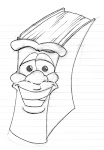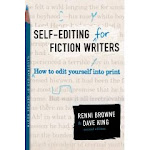
by Pam Zollman
This is Part 2 of my blogs on Scene and Sequel. Remember that every Scene has three parts: Goal (which we discussed last time), Conflict, and Disaster. This week we’ll discuss “conflict.”
One definition of conflict is “a state of open, often prolonged fighting; a battle or war.” Another definition is “a competitive or opposing action of incompatibles.” But the best definition I’ve ever seen of conflict is “two dogs, one bone.”
Some books have major battles in them, some physical and some mental. Some books have good vs evil (think Harry Potter). Some have two people wanting the same thing, but only one can have it. Depending on the age of your readers as well as the type of story you’re telling, you’ll have different degrees of conflict.
Conflicts are the results of obstacles blocking a goal. When your character is trying to get from point a to point b, you need to put something in the way to stop him. As he confronts the obstacle, he must decide how to deal with it. This, in turn, reveals the true nature of your character and allows him to grow slowly throughout your story.
· E Every story has conflict.
We don’t want our lives to have conflict; we go out of our way, in fact, to avoid it. However, we don’t want to read books without conflict. Those books are boring...and don’t sell. Since your story has a goal, then your story must have something to prevent that goal from being easily achieved. Plots usually concern one (or more) of these: man against man, man against nature, man against society, or man against himself.
· E Every character has conflict.
Obstacles for a character are developed from two main places: his goal and his nature. When you are devising obstacles, you must make them fit the story and move it forward. So examine your character’s main story goal and ask yourself ways to stop him from achieving it. What are some of the natural obstacles? If a boy wants to hit a home run, but usually strikes out, a natural obstacle would be a lack of time to practice. Also examine your character’s nature and use his weaknesses and fears as obstacles. If that boy had a weakness of not being able to say “no” to his friends, then he would give up hitting practice time to hang with his friends...and not be any closer to hitting a home run, which is his goal.
· E Every scene has conflict.
While your character has a major over-arching story goal, he also has smaller goals that move him forward in the story. Each scene has a goal, so therefore, each scene has conflict – something to stop your character from achieving his goal. The obstacle doesn’t always have to stop your character; it can also just hinder your character along the way. The size of the obstacle depends on the importance of the scene. The more important the scene, the bigger the obstacle, and therefore, the bigger the conflict. Your reader wants to see conflict “on stage,” not “off stage.” In order words, he wants to read about it as it happens, not hear about it from the author after it happened. If you do that, your reader will feel cheated.

Even though conflict and its preceding obstacles stop your main character from achieving his goal easily, it should not stop your character completely. Don’t paint your character into a corner; allow him a way to escape. If you don’t, then your story ends. But each obstacle and resulting conflict moves the story forward and strengthens your character.
Conflict: it’s what your reader wants!
Next time we’ll discuss “disasters.”












No comments:
Post a Comment